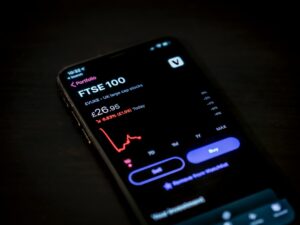Finding the Sweet Spot: How to Choose the Right Forex Trading Time Frame for You
When it comes to forex trading, one of the most important factors to consider is the time frame that you will be trading on. The time frame you choose can greatly impact your trading strategy, risk management, and overall success in the market. In this article, we will explore the different time frames available to forex traders and discuss how to choose the right one for you.
Before diving into the various time frames, it is crucial to understand what a time frame is in forex trading. A time frame refers to the length of time that each candlestick or bar on a price chart represents. For example, a 1-minute time frame means that each candlestick represents one minute of trading activity, while a daily time frame represents a whole day of trading.
The choice of time frame depends on your trading style, goals, and available time commitment. Let’s explore the different time frames and their characteristics to help you make an informed decision.
1. Scalping (1-minute to 15-minute time frame):
Scalping is a trading strategy that involves making quick trades to take advantage of small price movements. Traders who use this strategy typically look for short-term opportunities and aim to capture small profits multiple times throughout the day. Scalping requires intense focus and quick decision-making, making it suitable for experienced traders who can devote significant time to trading.
2. Day Trading (15-minute to 1-hour time frame):
Day trading involves entering and exiting trades within the same day. Traders using this time frame analyze shorter-term trends and aim to capitalize on intraday price movements. Day traders often use technical analysis and indicators to identify potential setups. This time frame requires active monitoring of the market and quick execution of trades.
3. Swing Trading (4-hour to daily time frame):
Swing trading involves holding trades for a few days to several weeks, aiming to profit from larger price moves. Traders using this time frame analyze medium-term trends and look for setups that offer a favorable risk-to-reward ratio. Swing trading allows for more flexibility and requires less time commitment compared to scalping and day trading.
4. Position Trading (weekly to monthly time frame):
Position trading is a long-term approach where trades can be held for several weeks, months, or even years. Traders using this time frame analyze long-term trends and aim to capture significant price movements. Position trading requires patience and a broader perspective of the market. It is suitable for traders with a long-term investment mindset.
Now that we have discussed the different time frames, how do you choose the right one for you?
1. Define your goals and trading style:
Consider your goals and objectives as a trader. Are you looking for quick profits or are you more interested in long-term investment opportunities? Are you comfortable with frequent trades or do you prefer a more hands-off approach? Understanding your goals and trading style will help you narrow down the suitable time frame.
2. Assess your available time commitment:
Evaluate how much time you can dedicate to trading. If you have a full-time job or other commitments, scalping or day trading may not be feasible due to the need for constant monitoring. Swing trading or position trading might be more suitable as they require less frequent monitoring.
3. Experiment and analyze:
It is essential to experiment with different time frames and see which one aligns best with your trading strategy and goals. Take note of your performance, emotional state, and overall satisfaction with each time frame. Analyzing your trades and their outcomes will help you make an informed decision.
In conclusion, choosing the right forex trading time frame is a critical decision that can greatly impact your trading success. It is crucial to understand your goals, trading style, and available time commitment to make an informed choice. Experimenting with different time frames and analyzing your results will help you find the sweet spot that suits your needs. Remember, there is no one-size-fits-all approach, and what works for one trader may not work for another.






